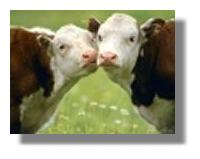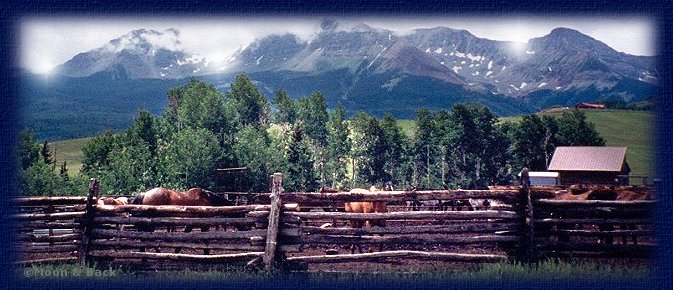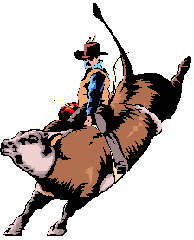8Other Causes of Scours
Coccidiosis is caused by one-celled parasites that invade the intestinal tract of animals. There are many species of coccidia. Two, Eimeria zurnii and Eimeria bovis, are usually associated with clinical infections in cattle. Coccidiosis has been observed in calves 3 weeks of age and older, usually following stress, poor sanitation, overcrowding or sudden changes of feed. It often occurs in calves 7 to 14 days after they are moved from the calving lots onto pasture.
Clinical coccidiosis is diagnosed by finding significant numbers of parasites in the feces. The results of the fecal examination must be related to the clinical signs and intestinal lesions. Occasionally, clinical coccidiosis will be present with bleeding and very few parasites in the fecal material.
Laboratory examination of sections of the intestine may be required for diagnosis. A typical sign of coccidiosis in young calves is diarrhea with fecal material smeared over the rump as far around as the tail will reach. This may or may not contain blood. Death may occur during the acute period or later from secondary complications.
Sulfonamides have been the treatment of choice for coccidiosis for many years. If treatment is given before signs appear, the disease can largely be prevented. Amprolium has been cleared for use in calves as a preventative. This should be supplied at the rate of 5 mg/kg of body weight for a period of 21 days to cover the time period during which this disease is anticipated. Good feeding practices, management, and sanitation are the control methods of choice.
Cryptosporidium is a protozoan parasite that is much smaller than coccidia. It has the ability to adhere to the cells that line the small intestine and to damage the microvilli. Several reports from researchers and diagnosticians have associated cryptosporidium with outbreaks of calf scours. As a rule, cryptosporidium is detected in combination with corona virus, rotavirus, and/or E. coli. Calves infected by cryptosporidium have ranged from 1 to 3 weeks in age.
Under range conditions, a calf adapts a pattern of nursing that fills his needs. Nutritional scours can be caused by anything that disrupts this normal habit. A storm, strong wind, or the mother going off hunting for new grass disrupts the normal nursing pattern. When the hungry calf does get an opportunity to nurse, the cow's udder may contain more milk than normal and the calf may overeat resulting in a nutritional scours. Erratic nursing patterns may also be conducive to enterotoxemia. Nutritional scours is usually white scours caused by undigested milk passing through the intestinal tract.
This type of scours usually presents little problem in treatment. If the affected calves are still active and alert, no treatment is required. If the calf becomes depressed or fails to nurse, it should be treated. Oral antibiotics can be used as a treatment.
8Treatment
CLICK HERE: Administer
Click Here: Testimonials

8Calf Scours: Causes, Prevention
Don Hudson, D.V.M., Extension Veterinarian
R. Gene White, D.V.M., Coordinator, Regional College of
Veterinary Medicine Program
8Viral Scours
A reo-like virus can cause scours in calves within 24 hours of birth. However, when the infection- is first introduced into the herd, it can affect calves up to 30 days of age or older. Infected calves are severely depressed. There may be a drooling of saliva and profuse watery diarrhea. The feces will vary in color from yellow to green. Calves lose their appetite and the death rate may be as high as 50 percent, depending on the secondary bacteria present.
Diagnosis depends on an accurate history, clinical signs, and proper specimen collection and submission to a laboratory. The reo-like virus infection alone causes no diagnostic gross lesions in the intestine, but there is an increased volume of fluid in both the small and large intestine.
Scours caused by corona virus occurs in calves that are over 5 days of age. When the infection first starts in a herd, calves up to 6 weeks of age may scour. These calves are not as depressed as those infected with rotavirus. Initially, the fecal material may have the same appearance as that caused by rotavirus. As the calf continues to scour for several hours, however, the fecal material may contain clear mucus that resembles the white of an egg. Diarrhea may continue for several days. Mortality from corona virus scours ranges from 1 to 25 percent.
Gross lesions are not significant. The intestine is often full of liquid feces. If lesions are observed in the intestine, they are the result of secondary bacterial infection.
Treatment for corona virus scours is the same as that for rotavirus scours. Many herds have been found to be infected with both the rota- and corona viruses.
A vaccine that is specific for the rota- and corona viruses is available. It can be administered in one of two ways 1) orally to the calf soon after birth or 2) as a vaccination to the pregnant cow. The first year that a vaccination program is started in the beef cowherd, the cow receives two vaccinations--the first at 6 to 12 weeks before calving, and the second as close to calving as possible. The next year, the cows are given a booster vaccination just before calving. In herds where the calving period extends over more than 6 to 8 weeks, cows that have not calved at the end of a 6-week period should receive a second booster vaccination. Following this procedure insures that the calf receives a high level of rota- and corona virus antibodies in the colostrum. However, the calf must receive adequate colostrum, preferably within the first 4 hours after birth as the antibodies cannot be absorbed later than 24 hours after birth. This cow vaccination program fits well into a beef cowherd health program and helps prevent virus build-up in the herd.
Diagnosis of Rota- and Corona virus Scours. Accurate diagnosis of viral scours can be made only by laboratory tests. Your veterinarian knows what material to submit for examination.
The virus of bovine virus diarrhea can cause diarrhea and death in young calves. Diarrhea begins 2 to 3 days after exposure and may persist for quite a long time. Ulcers on the tongue, lips, and in the mouth are the usual lesions that can be found in the live calf. These lesions are similar to those found in yearlings and adult animals affected with bovine virus diarrhea.
Diagnosis is by history, lesions, and diagnostic laboratory assistance. Treatment is similar to that used for other viral scours. Vaccinating all replacement heifers 1 to 2 months before breeding controls bovine virus diarrhea. Caution: do not vaccinate pregnant heifers or cows with modified live virus. Consult your veterinarian before starting a bovine virus diarrhea vaccination program.
8Bacterial Scours
Escherichia coli (E. coli) has been incriminated as a major cause of scours. Many times this is the only organism identified following routine bacteriologic culturing. Certain E. coli can cause diarrhea. Many different serotypes (kinds) of E. coli have been identified; some cause scours while others do not. E. coli is always present in the intestinal tract and is usually the agent that causes a secondary infection following viral agents or other intestinal irritants.
E. coli scours is characterized by diarrhea and progressive dehydration. Death may occur in a few hours before diarrhea develops. The color and consistency of the feces are of little value in making a diagnosis of any type of diarrhea. The course varies from 2 to 4 days, and severity depends on age of the calf when scours starts and on the particular serotype of E. coli.
Upon postmortem examination, lesions are nonspecific. However, the small intestine may be filled with fluid and the large intestine may contain yellowish feces.
Diagnosis depends on an accurate history, clinical signs, and culture of internal organs for bacteria and serotyping of the organism. The location at which the culture from the intestine was taken is also important. Control of E. coli scours can be difficult in a severe herd outbreak. All calves should receive colostrum as soon after birth as possible. This helps the calf resist E. coli infection. Early isolation and treatment of scours helps to prevent new cases. There are new E. coli cow vaccines now on the market. These vaccines contain the K99 antigen which should give immunity to many types of E. coli. The vaccine is administered 6 weeks and 3 weeks prior to calving. The new E. coli vaccine is also available in combination with the rota- and coronavirus vaccine. This vaccination builds high antibody levels in the colostrum, but the calf must get colostrum in the first few hours of life for the vaccine to be effective.
There are more than 1000 types of salmonella, all of which are potential disease producers. Salmonella produces a potent endotoxin (poison) within its own cells. Animals may be more severely depressed following treatment with antibiotics as treatment causes the salmonella organisms to release the endotoxin, producing shock. Therefore, treatment should be designed to combat endotoxic shock.
Calves are usually affected at 6 days of age or older. This age corresponds very closely to the age of the coronavirus infection. The source of salmonella infection in a herd can be from other cattle, birds, cats, rodents, the water supply, or a human carrier.
Clinical signs associated with salmonella infection include diarrhea, blood and fibrin in the feces, depression, and elevated temperature. The disease is more severe in young or debilitated calves. Finding a membrane-like coating in the intestine on necropsy is strong presumptive evidence that salmonella might be involved. Salmonella isolations should be checked by a bacteriologic sensitivity test to determine the antibiotics of choice.
Enterotoxemia can be highly fatal to young calves. It is caused by toxins produced by Clostridium perfringens organisms. There are 6 types of Clostridium perfringens that can produce toxins, of which types B, C, and D appear to be the most important in calves.
The disease has a sudden onset. Affected calves become listless, display uneasiness, and strain or kick at their abdomen. Bloody diarrhea may or may not occur. It is usually associated with a change in weather, a change in feed of the cows, or management practices that cause the calf to not nurse for a longer period of time than usual. The hungry calf may over-consume milk which establishes a media in the gut that is conducive to the growth and production of toxins by the clostridial organisms. In many cases, calves may die without clinical signs being observed.
Postmortem lesions may be a hemorrhagic intestinal tract; thus, the common name, "purple gut." In the small intestine, there may be large hemorrhagic or bloody, purplish areas where the tissue looks dead. This is usually attributed to type C. Types B and D may produce diarrhea without the usual postmortem lesions. Diagnosis of these toxins is by finding the toxin in the small intestine by laboratory methods. This toxin breaks down rather rapidly so the contents of the intestinal tract must be collected very soon after death and preserved by freezing. Finding lesions of hemorrhagic enteritis at postmortem in a calf that has died suddenly is basis for a tentative diagnosis.
This disease is best controlled by vaccinating the cows with Clostridium perfringens toxoid 60 and 30 days before calving. A single booster dose of toxoid should be given annually thereafter before calving. If this problem is diagnosed in calves from nonimmunized cows, antitoxin can be given to the calf. Administration of antitoxin and oral antibiotics is the only treatment that is effective.

Click here to add text.

All Natural -- Use WITH or WITHOUT Antibotics. FREE Consultations !!
An All Natural Mineral Product
That Controls Scours!
This page was last updated on: 2/1/2010
P. O. Box 1982
Clarkston, WA 99403
Telephone: 509-758-5445
FAX: 509-758-5701
E-Mail: Sales@LarsonCenturyRanch.com
Web Designer: Design Carte

[Top]
Larson Century Ranch, Inc.


ADMINISTRATION
LCR Paste PLUS!!
$100 (300 cc)
$20 Applicator
Calf scours or calf diarrhea causes more financial loss to cow-calf producers than any other disease-related problem they encounter.
Calf scours is not a disease--it is a clinical sign of a disease that can have many causes. In diarrheas, the intestine fails to absorb fluids and/or secretion into the intestine is increased.
A calf is approximately 70 percent water at birth. Loss of body fluids through diarrhea can produce rapid dehydration. Dehydration and the loss of certain body salts (electrolytes) produce a change in body chemistry and severe depression in the calf. Although infectious agents may be the cause of primary damage to the intestine, death from scours is usually due to loss of electrolytes, changes in body chemistry, dehydration, and change in acid-base balance rather than by invasion of an infectious agent. The infectious agent that causes scours is important, however, from the standpoint of prevention.


[Top]
[Top]
[Top]


